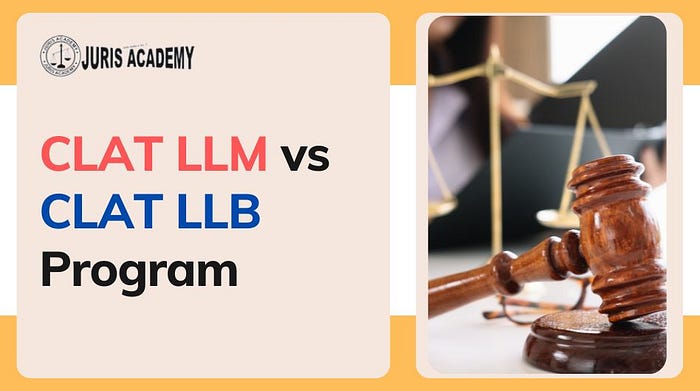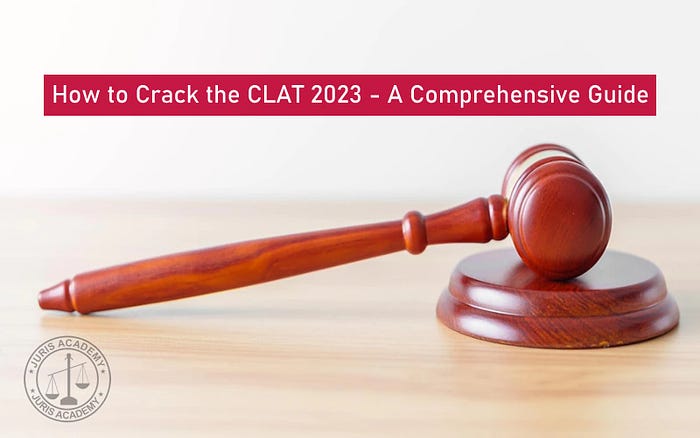Juris Academy
CLAT LLM vs CLAT LLB

What is LLM?
The CLAT (Common Law Admission Test) is an entrance examination conducted in India for admission to undergraduate (LLB) and postgraduate (LLM) law programs offered by various participating universities. While both the CLAT LLM and CLAT LLB degrees are related to the field of law, there are some key differences between them. Here is a breakdown of those differences:
1. Academic Level:
- • CLAT LLB: This degree is at the undergraduate level and is commonly pursued by students immediately after completing their higher secondary education (12th grade). It is a three-year program in India.
- • CLAT LLM: This degree is at the postgraduate level and is pursued by students who have already completed their LLB or an equivalent law degree. It is typically a one or two-year program.
2. Eligibility:
- • CLAT LLB: To be eligible for CLAT LLB, candidates must have completed their higher secondary education (10+2) or an equivalent examination from a recognized board. There is usually an age limit for CLAT LLB, which varies depending on the university.
- • CLAT LLM: To be eligible for CLAT LLM, candidates must have completed their LLB or an equivalent law degree from a recognized university. The specific eligibility criteria may vary among universities.
3. Curriculum:
- • CLAT LLB: The undergraduate LLB program focuses on providing a comprehensive understanding of the foundational principles of law. It covers subjects such as constitutional law, criminal law, contract law, property law, administrative law, etc.
- • CLAT LLM: The postgraduate LLM program builds upon the knowledge acquired during LLB and delves deeper into specific areas of law. Students can specialize in various fields such as corporate law, intellectual property law, international law, criminal law, etc. The curriculum includes advanced courses, research work, and dissertation writing.

4. Career Opportunities:
- • CLAT LLB: After completing CLAT LLB, graduates can pursue a career as a lawyer, legal advisor, or legal consultant. They can practice law in various courts, work in law firms, corporate legal departments, government agencies, or choose to pursue higher education.
- • CLAT LLM: CLAT LLM provides graduates with enhanced knowledge and expertise in a particular area of law. It opens opportunities for careers in academia as professors or researchers, as well as in specialized legal practice, consulting, or working with international organizations. It may also provide an edge when applying for certain government or corporate positions.
These are some of the key differences between CLAT LLB and CLAT LLM degrees. The choice between pursuing an LLB or LLM depends on one’s educational background, career goals, and personal interests in the field of law.
Comparison of the Admission Criteria for LLM and LLB courses
The admission criteria for LLM (Master of Laws) and LLB (Bachelor of Laws) courses may vary depending on the specific university and country. However, we can provide you with a general comparison of the admission criteria for LLM and LLB courses:
➤ LLB Admission Criteria:
- 1. Educational Qualification: For LLB, the minimum educational qualification is usually the completion of higher secondary education (10+2) or an equivalent examination from a recognized board.
- 2. Age Limit: Some universities may have an upper age limit for LLB admissions, typically ranging from 17 to 20 years.
➤ LLM Admission Criteria:
- 1. Educational Qualification: To be eligible for LLM, candidates must have completed their LLB or an equivalent law degree from a recognized university.
- 2. Minimum Academic Requirements: There may be minimum academic requirements in terms of the candidate’s performance during their LLB or previous law degree program. This may include a minimum percentage or grade point average (GPA) that needs to be achieved.
It is important to note that admission criteria can vary among universities and countries, so it is advisable to check the specific requirements of the institutions you are interested in applying to.
For More Detail Click Here
Comments
Post a Comment